Prehistoric crocodiles in the ocean even a single bite can make a hole in the belly of the fish
When it comes to crocodiles, in many people's impressions it is one of the typical cold-blooded predators and killers living in fresh water and only a few saltwater crocodiles live in the ocean. In the Mesozoic era, when the dinosaurs were still dominating our Earth, there was a crocodile that almost spent all of its life living in the ocean but the strange thing is Their bodies are not like the crocodiles today at all.
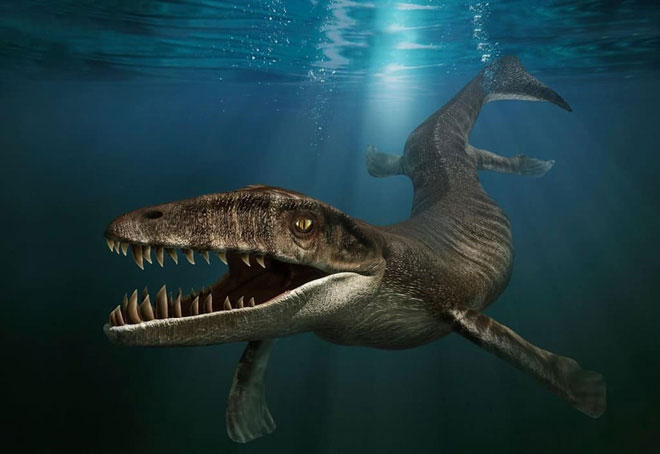
Crocodiles in the Mesozoic body has nothing like today's crocodiles at all.
Germany is considered to be an extremely important place in the history of fossil discovery and there have been many famous fossils discovered within the territory of this country. In the Solenhofengraphic limestone limestone, many fossils of paleontological species have been discovered, including: Arc'teryx, Compsognathus, Rhamphorhynchus .
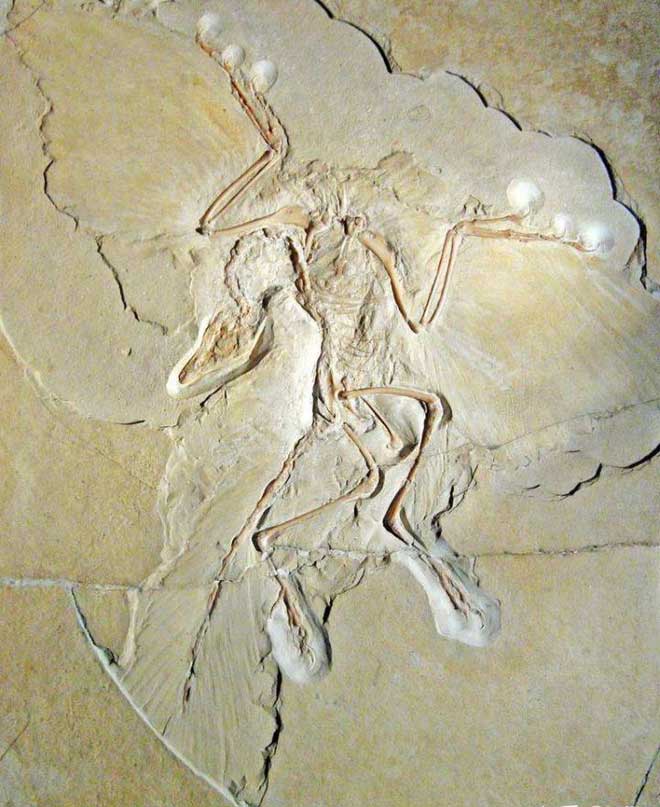
Fossils an ancient dinosaur.
In addition to the fossils of dinosaurs, pterizard and many different marine creatures, some giant sharp fossils of teeth have been found in the limestone layer. Judging from the shape and characteristics of these fossils, paleontologists believe it came from a large meat-eating Theropoda dinosaur.
So, in 1856, paleontologist Von Quenstedt based on those teeth and named them Dakosaurus , the scientific name meaning "bite lizard" , because these teeth were born. to create powerful bites and bites.
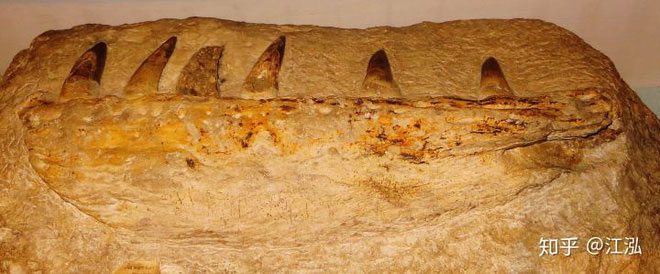
Fossils of ancient creatures.
After Dakosaurus was named, paleontologists discovered many other fossils of this species, not only in Germany, but also in Europe and even Central and South America (Mexico and Argentina).

In fact, they are absolutely not dinosaurs, instead this is a species of sea crocodile.
Over time, more and more fossils of Dakosaurus fossils were discovered and their skulls were gradually discovered and re-recognized by scientists. In fact, they are absolutely not dinosaurs, instead this is a species of sea crocodile .
Why is there such a confusion in the Dakosaurus classification? The problem is in the teeth of Dakosaurus . Crocodiles usually have conical teeth, but the teeth of Dakosaurus are quite different because they have a flat and long shape . These teeth are not only flat but also have a jagged structure at the edges on both sides. This is a typical feature of carnivorous dinosaurs' teeth. Among all known crocodiles , Dakosaurus teeth are the only one with this feature.
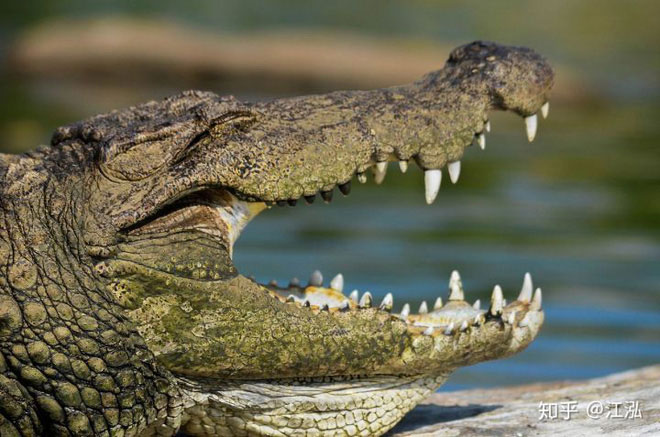
The shape of teeth of modern crocodiles.

Image reconstructing teeth of Dakosaurus.
And it was these special teeth that revealed the brutal nature of Dakosaurus. From the characteristics of tooth structure, it can be seen that with other crocodiles, conical teeth will mainly be used to stab and grip prey while the crocodile teeth are suitable for biting, biting and cutting dissect the original idea of their name - a very good animal.
The standard shape of a crocodile is a species with a flat head, sturdy body, elongated tail, short limbs and webbed between the toes. But if you put these traits into Dakosaurus, then you probably think that they are completely not a crocodile. Because although it is a crocodile, but they do not look like any other crocodile species that people have known.

Although it is a crocodile, they do not look like any other crocodile species that people know.
The head of Dakosaurus is quite tall and triangular on the side, pointed at the front and broad at the back. Dakosaurus has a pair of nostrils in front of the head and a pair of large eyes on the sides. As mentioned earlier, they have two sharp rows of teeth in their mouth and large muscle groups on the box so this crocodile has a great bite force.
Dakosaurus's head is followed by a stiff neck and cylindrical body. The rear of the body is thinner but not as sharp as a modern crocodile, but instead has a caudal fin shape, the legs of which are similar in shape to a paddle-shaped fin similar to the These fish are used to control the balance of the body when hunting prey.
From the outer characteristics of Dakosaurus we can see that they are an evolutionary crocodile to adapt to life completely under the ocean and to sacrifice the ability to return to the mainland as their relatives.

Dakosaurus is a crocodile that evolved to adapt to life entirely in the ocean.
Through carbon dating analysis, paleontologists determined the longevity of this crocodile is quite long, from 157 million years ago to 137 million years ago (from Jurassic to Cretaceous).
From the limestone area where fossils were first discovered, their habitats are located in the Jurassic shallow tropical waters.
In addition to discovering fossils of Dakosaurus, from the Solenhofengraphic limestone layer, archaeologists also discovered many other species such as Plesiosuchus and Steneosaurus , of which Steneosaurus is considered a prey of Plesiosuchus and Dakosaurus.

Plesiosuchus.

Steneosaurus.

Dakosaurus.
The large size (about 5m in body length) and the ferocious nature of Dakosaurus, they often consider smaller creatures as prey, especially the species of dragon fish, typically Aegirosaurus.
When hunting this crocodile will charge at an extremely fast speed, open mouth and bite violently, their huge bite force can even bite through the belly or brutal rather than causing the dragon's body to split. in half.
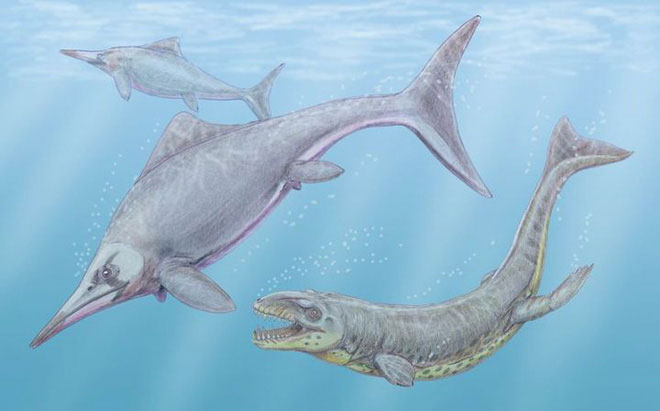
When hunting this crocodile will charge at extremely fast speeds.
Although it is not the largest crocodile in history, nor is it the most ferocious sea reptile of the Mesozoic, but to some extent Dakosaurus is still considered the culmination of evolution in Deep fish family to adapt bottom to life in the ocean.
- Interesting things about crocodiles
- Ancient crocodile species can bite sea turtles with one bite
- Discovered 'vampire fish' with bizarre teeth
- Survival of crocodiles and dinosaurs
- Giant prehistoric crocodile
- Prehistoric fish have teeth like humans
- Fish 'live fossils'
- Giant prehistoric fish species still live up to now
- Discover 200 million year old fossil with a belly filled with squid
- Warning fish species 'testicular bite'
- Whale - Fish species existed since prehistoric times
- Why can alligators bite their prey fast?
 Discovered an ancient centipede fossil 99 million years old
Discovered an ancient centipede fossil 99 million years old Discovered bat-like dinosaurs in China
Discovered bat-like dinosaurs in China Discovered a 200-year-old bronze cannon of the coast
Discovered a 200-year-old bronze cannon of the coast Discover 305 million-year-old spider fossils
Discover 305 million-year-old spider fossils